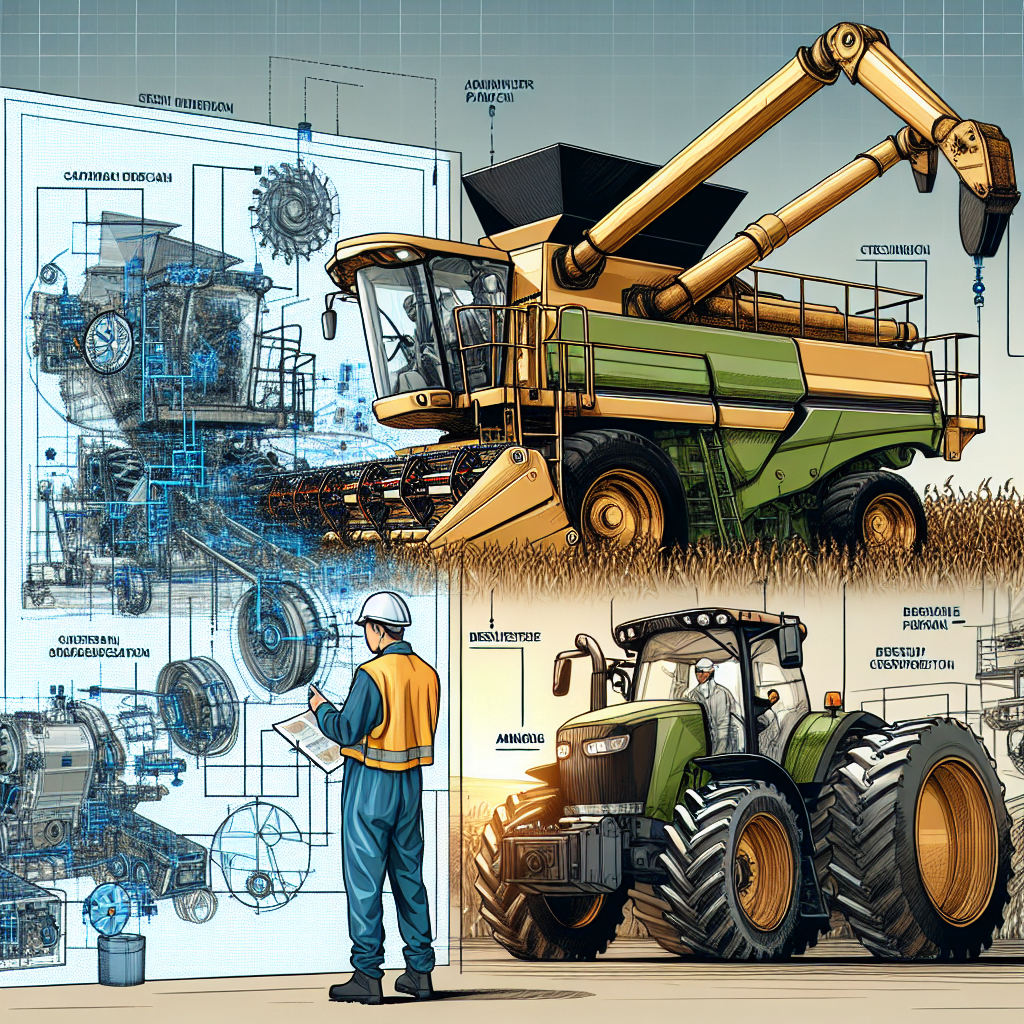Your cart is currently empty!

“CLAAS Service Manual: Essential Schematics and Wiring Diagrams”
When it comes to maintaining and repairing agricultural machinery, having access to detailed service manuals can be a game-changer. CLAAS, a renowned manufacturer of agricultural equipment, ensures that its service manuals are comprehensive and user-friendly. Among the critical components of these manuals are schematics and wiring diagrams. These elements are invaluable for technicians and operators alike, providing a clear roadmap for troubleshooting and repairs. In this article, we will delve into the significance of schematics and wiring diagrams in CLAAS service manuals, their importance for repairs, how to interpret them, and the overall benefits of using these manuals.
Overview of Schematics in CLAAS Service Manuals
Schematics are detailed diagrams that depict the electrical and mechanical systems within a piece of machinery. In the context of CLAAS service manuals, schematics play a crucial role in illustrating how different components are interconnected. These diagrams provide a visual representation of the internal workings of CLAAS equipment, making it easier for technicians to understand the layout and function of each part. For instance, a schematic might show the arrangement of hydraulic systems, electrical circuits, and control modules, offering a comprehensive view of the machinery’s architecture.
One of the primary advantages of including schematics in service manuals is that they facilitate accurate diagnostics. When a piece of equipment malfunctions, technicians can refer to the schematics to pinpoint the exact location and nature of the problem. This not only speeds up the repair process but also ensures that issues are resolved correctly the first time. By providing a clear and detailed map of the machinery’s systems, schematics help technicians avoid guesswork and reduce the risk of further damage.
Furthermore, schematics in CLAAS service manuals are designed to be user-friendly. They are typically color-coded and include labels for each component, making it easier to identify and understand different parts of the system. This level of detail is particularly beneficial for technicians who may be new to working with CLAAS equipment, as it provides a clear and accessible reference point.
Another key feature of CLAAS schematics is their comprehensiveness. These diagrams cover a wide range of systems and components, from basic electrical circuits to complex hydraulic networks. This ensures that technicians have access to all the information they need, regardless of the specific issue they are dealing with. By providing a complete and detailed overview of the machinery’s systems, CLAAS schematics help technicians carry out repairs more effectively and efficiently.
In addition to aiding in diagnostics and repairs, schematics also play a crucial role in preventive maintenance. By regularly referring to these diagrams, technicians can identify potential issues before they become major problems. This proactive approach helps extend the lifespan of the equipment and ensures that it operates at peak efficiency.
For those looking to access CLAAS service manuals, including detailed schematics, you can visit CLAAS Service Manuals for more information and resources.
Importance of Wiring Diagrams for Repairs
Wiring diagrams are another essential component of CLAAS service manuals. These diagrams provide a detailed overview of the electrical systems within the machinery, including the connections between different components and the flow of electricity. For technicians, wiring diagrams are indispensable tools for diagnosing and repairing electrical issues. They offer a clear and concise representation of the electrical layout, making it easier to identify and resolve problems.
One of the primary reasons wiring diagrams are so important is that electrical issues can be particularly challenging to diagnose. Without a clear understanding of the electrical system, technicians might struggle to identify the root cause of a problem. Wiring diagrams eliminate this uncertainty by providing a detailed map of the electrical connections. This allows technicians to quickly and accurately pinpoint the source of the issue, whether it’s a faulty wire, a damaged connector, or a malfunctioning component.
In addition to aiding in diagnostics, wiring diagrams are also crucial for ensuring safe and effective repairs. Working with electrical systems can be dangerous, particularly if technicians are not familiar with the layout and connections. Wiring diagrams provide a clear and accurate reference, helping technicians avoid mistakes that could lead to further damage or injury. By following these diagrams, technicians can carry out repairs with confidence, knowing that they have a reliable guide to follow.
Another key benefit of wiring diagrams is that they help technicians understand the relationships between different components. Electrical systems are often complex, with multiple connections and interdependencies. Wiring diagrams provide a visual representation of these relationships, making it easier to understand how different parts of the system interact. This holistic view is particularly valuable for diagnosing and repairing complex issues, as it allows technicians to see the bigger picture and identify potential points of failure.
Wiring diagrams are also essential for troubleshooting and testing. When a problem occurs, technicians can use the diagrams to trace the flow of electricity and identify any disruptions or anomalies. This step-by-step approach helps ensure that issues are identified and resolved systematically, reducing the risk of overlooking potential problems. By providing a clear and detailed roadmap, wiring diagrams help technicians carry out thorough and effective repairs.
For those looking to access CLAAS service manuals, including detailed wiring diagrams, you can visit CLAAS Service Manuals for more information and resources.
How to Interpret CLAAS Wiring Diagrams
Interpreting wiring diagrams can initially seem daunting, especially for those new to working with electrical systems. However, CLAAS wiring diagrams are designed to be user-friendly and accessible. The first step in interpreting these diagrams is to familiarize oneself with the symbols and conventions used. Wiring diagrams use standard symbols to represent different components, such as switches, connectors, and wires. Understanding these symbols is essential for accurately interpreting the diagrams.
CLAAS wiring diagrams are typically color-coded, which helps in identifying different wires and their functions. For instance, different colors may be used to represent power wires, ground wires, and signal wires. By paying attention to these color codes, technicians can quickly and easily identify the various connections and understand the flow of electricity within the system. This color-coding system simplifies the process of interpreting the diagrams and ensures that technicians can accurately follow the electrical pathways.
Another important aspect of interpreting wiring diagrams is understanding the layout and structure of the diagrams themselves. CLAAS wiring diagrams are usually organized in a logical and systematic manner, with different sections representing different parts of the electrical system. For example, one section might show the wiring for the engine control unit, while another section shows the connections for the lighting system. By understanding this organization, technicians can quickly locate the information they need and navigate the diagrams more effectively.
In addition to symbols and color-coding, CLAAS wiring diagrams also include labels and annotations that provide additional information about the components and connections. These labels might include details such as wire gauges, connector types, and component specifications. By paying attention to these annotations, technicians can gain a deeper understanding of the electrical system and ensure that they are using the correct parts and tools for repairs.
Another useful feature of CLAAS wiring diagrams is the inclusion of testing points and diagnostic information. These diagrams often highlight specific points in the electrical system where technicians can perform tests to check for continuity, voltage, and other parameters. By following these testing points, technicians can systematically diagnose and troubleshoot electrical issues, ensuring that they identify the root cause of the problem.
For those looking to access CLAAS service manuals, including detailed wiring diagrams, you can visit CLAAS Service Manuals for more information and resources.
Benefits of Using CLAAS Service Manuals
Using CLAAS service manuals, which include detailed schematics and wiring diagrams, offers numerous benefits for technicians and operators. One of the primary advantages is the ability to carry out accurate and efficient repairs. With access to comprehensive diagrams and detailed information, technicians can quickly diagnose and resolve issues, minimizing downtime and ensuring that machinery is back in operation as soon as possible.
Another significant benefit of using CLAAS service manuals is that they help ensure the safety of technicians and operators. Working with complex machinery and electrical systems can be hazardous, particularly if individuals are not familiar with the equipment. By providing clear and detailed instructions, schematics, and wiring diagrams, CLAAS service manuals help technicians carry out repairs safely and effectively, reducing the risk of accidents and injuries.
CLAAS service manuals also play a crucial role in preventive maintenance. By regularly referring to these manuals, technicians can identify potential issues before they become major problems. This proactive approach helps extend the lifespan of the equipment and ensures that it operates at peak efficiency. Preventive maintenance not only reduces the risk of unexpected breakdowns but also helps optimize the performance and reliability of the machinery.
In addition to aiding in repairs and maintenance, CLAAS service manuals are valuable training resources. For technicians who are new to working with CLAAS equipment, these manuals provide a comprehensive and accessible reference point. By studying the schematics and wiring diagrams, technicians can gain a deeper understanding of the machinery’s systems and components, building their knowledge and expertise over time.
Another key benefit of using CLAAS service manuals is that they are designed to be user-friendly and accessible. The diagrams and instructions are presented in a clear and logical manner, with color-coding, labels, and annotations to aid in interpretation. This user-friendly design ensures that technicians can quickly and easily find the information they need, reducing the time and effort required for repairs and maintenance.
For those looking to access CLAAS service manuals, including detailed schematics and wiring diagrams, you can visit CLAAS Service Manuals for more information and resources.
In conclusion, schematics and wiring diagrams are essential components of CLAAS service manuals, providing invaluable support for diagnostics, repairs, and maintenance. These detailed diagrams offer a clear and comprehensive view of the machinery’s systems, helping technicians carry out accurate and efficient repairs. By ensuring the safety of technicians, facilitating preventive maintenance, and serving as valuable training resources, CLAAS service manuals play a crucial role in optimizing the performance and reliability of agricultural equipment. For those looking to access these detailed and user-friendly manuals, CLAAS Service Manuals is an excellent resource.
